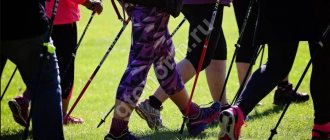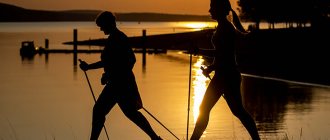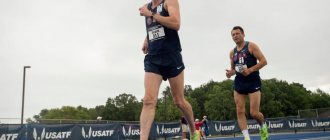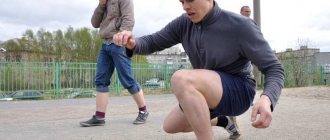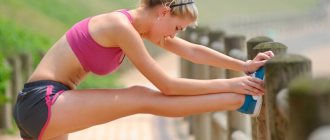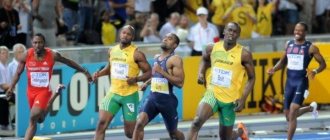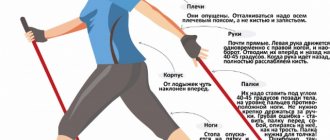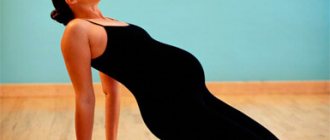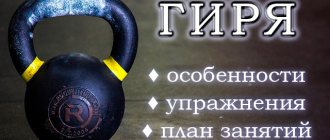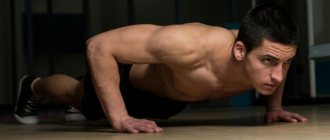It's a shame when small nuances can ruin the most wonderful endeavors. The technique of Nordic walking with poles is very simple, but everyone who wants to lose weight, increase body endurance, improve their health, and get in shape should familiarize themselves with the rules and strictly follow them. After all, without them, the effect can be minimal or very extended over time. With the right approach and regular training, you will notice the first results within a month. Tempting, isn't it?
In addition, the rules of Nordic walking are extremely important for older people. Such walks help strengthen bone tissue and general muscle tone, and are indispensable for rehabilitation after surgical interventions on the joints.
The benefits of Nordic walking
During walking, not only the leg muscles work, but also the shoulder girdle, spine and arms. It allows you to train the cardiovascular system without the use of exhausting exercises. Outdoor activities and sunshine stimulate the production of vitamins and help strengthen the body and spirit.
Class times can be selected individually, regardless of the weather and time of day. With the right equipment, you can exercise comfortably even in light rain or heat. Finnish walking is considered a cardio sport, so it is often recommended as a means of controlling blood pressure.
What else might be useful?
You need to start with preparing sportswear. Here I advise you to adhere to the following rules:
- dress according to the weather and listen to your physical condition. It is almost impossible to freeze while walking, but you should not experience discomfort;
- shoes. Buy special sneakers designed for running or walking. They have the most competently formed sole and during exercise the body weight will be correctly distributed;
- Any clothing chosen must be breathable. In this case, your body will be able to remain functional longer, which means you will get more benefits from training.
Additionally, you may need the following items on your hike:
- Backpack. You will put all the necessary things in it.
- Water bottle. Adequate fluid intake is considered an integral part of athletes.
- Pedometer. He will be able to record your next achievements.
- Replaceable pole tips. For convenience, they can be changed depending on the surface on which you will walk.
As you can see, the starting set for a novice athlete is not that big. Manufacturers offer a wide range, so everyone can find ammunition to their liking and budget.
Who is recommended to walk with poles?
Thanks to the active movement of the unloaded joints of the entire lower half of the body (they are unloaded thanks to the poles), a rehabilitation and protective effect is achieved. This is especially important for middle-aged people, when degenerative changes in the joint capsule begin. Movement in the fresh air in a gentle manner has a beneficial effect on the state of the cardiovascular system, trains the heart and cleanses blood vessels of cholesterol. This load regimen has a beneficial effect on the veins and arteries of the legs. If you have varicose veins, it is recommended to consult a specialist before exercising.
People who are desperate to lose weight on diets should try Finnish walking. The specifics of this sport help to lose excess weight without injuring the joints with shock loads, as when running.
This sport is especially recommended if you have the following diseases:
- Osteochondrosis;
- VSD syndrome;
- Insomnia;
- Constipation;
- Problems with the cardiovascular system.
Nordic walking is of great importance in rehabilitation practice. When restoring ability to work and quality of life after injuries and accidents, as well as serious illnesses, it will come in handy. Even if it is not possible to achieve complete recovery, the exercises will significantly improve the quality of life.
To summarize, in terms of accessibility and benefits, Finnish walking can be recommended to all categories of the population, from schoolchildren to retirees. Especially older people will appreciate all the advantages, because with age, intense stress on the joints will only bring harm. For overweight people, walking may initially be the only way to achieve weight loss.
Warm up before walking
Before starting your workout, it is better to do a short warm-up to prepare your heart, muscles and tendons. For example, you can do the following:
- Stretch by standing on your tiptoes for a few seconds;
- Make several small jumps from foot to foot, and then with both feet;
- Stretch forward with one hand, back with the other, and then vice versa;
- Take a few long steps forward and lean to the side several times. In this case, the arms should move opposite to the body. The exercise is performed with walking sticks;
- Turn your body, while holding the sticks behind your back with your palms facing forward;
- Moving the sticks above you with straight arms, make several bends in different directions;
- Point your palms up, holding the sticks in front of you, then extend your arms forward, and then return to the starting position;
- From the previous position, lift the sticks as if they were a barbell;
- Hands behind your back, holding the sticks slightly apart, raise your hands up as high as possible;
- Holding one stick behind your back, place one hand on the top and the other on the bottom. Lift the stick up with one hand, stretching the muscles of the other hand;
- Lean on the sticks, placing them shoulder-width apart. With one leg extended, squat until tension appears in the extended leg. Repeat for the other leg;
- Do a partial squat, pushing off the air with sticks.
Perform each exercise 8-12 times.
You can also use an alternative warm-up option from the video:
This list of exercises is a guideline and can be changed to suit individual feelings. When warming up, the main thing is to choose exercises that have the maximum effect for you.
Technique and intensity
When learning the technique of walking with sticks, certain difficulties arise in mastering the opposite movements of the arms and legs. People who know how to ski have a slight advantage, since they have already learned the necessary set of movements.
Key points when mastering the technique:
Coordinate your arm movements with your leg movements. Please note that the opposite arm moves along with the leg when walking (the left leg works simultaneously with the right arm, and vice versa). No poles are needed for this exercise.
Walk, dragging sticks along the ground. It's best to start by practicing the movements with one hand, without using the second stick. Achieve synchronization of the movements of your legs and arms.
In this sport, the arms move in the same way as when skiing. The leading leg is bent at an angle of 45 degrees, and the trailing leg is parallel to the thigh. The main thing is the position of the feet. They should stand straight. When pushing, a roll occurs, as when running.
When developing physical fitness, sooner or later the question of increasing the intensity of training will arise. In addition to the simple advice to strengthen the work of the shoulder muscles, there is a little trick related to the length of sports poles. When purchasing them, you need to multiply the growth by the coefficient:
- 0.66 – low training intensity;
- 0.68 – standard;
- 0.7 – to increase the load.
When using standard sports poles, it is necessary to round the result to the nearest standard length. An advantage here is telescopic walking poles, the size of which can be adjusted exactly to your height and, if necessary, increased.
Third stage: rest
Take deep breaths and exhales with light movements of the torso and arms. After rest, proceed to the final stage exercises. If you have trouble breathing, chest pain, trembling, dizziness, nausea, or are out of breath while walking, stop and consult a doctor immediately.
If you suffer from heart disease, hypertension, or any other chronic illness, you should consult your doctor before starting recreational walking.
Features of poles
The design of Finnish walking equipment makes it impossible to let go of them. With the help of a special hand loop, which is more like a glove, the stick is well attached to the hand. Such a device also protects the athlete from incorrect hand movements.
When using for the first time, adjust the size of the strap to your hand and make sure that the glove does not interfere with blood circulation. Otherwise, it can lead to injuries and problems during long training sessions. For walking on asphalt and other hard surfaces, a rubber tip is used; when walking in the forest, it is removed and pushed off with a metal spike.
What are the contraindications
There are very few contraindications to walking:
- viral infections;
- recent surgeries;
- exacerbation of chronic diseases;
- increased blood pressure;
- limb injuries;
- flat feet (gives incorrect load distribution);
- deviations in the development of the spine;
- heart defects.
With a relatively low intensity of walking compared to other sports, the benefits are enormous. This “frivolous” sport will improve all systems, make you healthy and fit.
Equipment
Choosing the right equipment is half the battle in long-term training. The first priority, as in many sports, is choosing the right shoes. You can’t save money here; not only the comfort of training, but safety and health depend on it. Calluses and corns will become constant companions of feet shod in uncomfortable and bad shoes. Much attention should be paid to socks. It is advisable to wear two pairs of not too tight socks made from natural fabrics.
Specialized poles for Nordic walking are sold in any sports store. To choose from all their variety, just choose the ones that suit you. Telescopic poles do not provide advantages at the initial stage, so you can get by with standard ones.
Clothing should be appropriate for the weather outside. During the cooler months, it is better to dress in several layers than to wear one thick jacket. In such conditions, special thermal underwear has proven itself well, which removes moisture from the skin, thereby preventing you from freezing. If precipitation is possible or present, be sure to bring wind protection or a raincoat. By choosing clothes wisely, you will no longer depend on the weather when playing sports.
Use mobile devices to track your workout data. A fitness bracelet will help you monitor the distance traveled and calories burned. To control the route, a GPS tracker is suitable, which can be purchased as a separate device or installed on a smartphone. Nordic walking does not involve serious stress on the heart, so the use of a heart rate monitor is not necessary. The need to control heart rate is present in diseases of the cardiovascular system or severe obesity.
Food and drink
In no case do not forget about replenishing fluid reserves in the body. During long-term training, dehydration negatively affects the condition of the joints. If you allow this condition to happen in the heat, you can even get heatstroke. Make it a habit to take some liquid, water, or a sports drink when training in any weather. The quantity depends on individual needs.
You can select and use special bottles and hydration packs. In Nordic walking, the pace you gain is not as important as in running or cycling, so you can always stop, take water out of your backpack and drink in peace.
Before class, you should stock up on energy, so you should finish eating an hour before training, so it has time to be absorbed. Priority should be given to slow carbohydrates. It may happen that during training your energy levels become very low. For such cases, it is worth carrying with you a small energy bar, but high in calories, in order to urgently replenish energy.
After intense exercise, you should definitely replenish your supply of nutrients. You should not overeat after training, you should always drink water before eating. Food should consist of “long-term” carbohydrates and plus proteins of animal or plant origin. Porridge, meat, vegetables are the best friends for an athlete.
Preparation
Conditionally divide the walk into 4 stages, which will smoothly transition into each other:
- Preparatory or warm-up.
- Basic.
- Rest.
- Completion or final.
Any physical activity begins with a warm-up, including walking . First, walk a little at a slow pace to warm up your muscles. You should have a bottle of water with you to avoid dehydration.
Warm-up will reduce the risk of injuries to the joints and spine; it usually takes 3-5 minutes:
- Start by tilting your head alternately in all directions.
- Rotate your shoulder and elbow joints.
- Bend and lunge forward.
- Rotate your knees.
- Do 10 jumping jacks in place.
These exercises are enough to warm up and prepare the body for a walk. Each part of the warm-up lasts 1 minute.
Some general tips
- Monitor the condition of your shoes. Calluses can keep you out of sports activities for several weeks. For this reason, pay great attention to the condition of your feet, because prevention is better than cure.
- Keep an eye on the weather forecast. It's not hard to exercise on a rainy day, it's hard to do it unprepared, so check the expected weather before heading out.
- A small supply of water and food. As already noted, you should not underestimate thirst and hunger, because in the heat of sports excitement you can go to places where you cannot quickly get out.
- Don't forget about the company. It is better to train in a pleasant company; this will not only help your health, but also have fun and give you the opportunity to make new acquaintances.
- Choose your own route. You should not try to set speed or distance records right away. It’s better to build your route through picturesque places, enjoy nature and take a break from the city, while walking slower and less, rather than ruining your health every time.
- In any business, the main thing is regularity. It is much better to train often for medium distances than to do a marathon once. This will not bring the desired effect, but rather, on the contrary, will do harm. Therefore, you should devote a little time to Nordic walking, but as often as possible.
- A dog is great for getting outside every day. Try to accustom your pet to walking, and you will be able to exercise almost every day. This will affect not only your condition, but also the health of your pet.
- Time it right. Especially if you live near sparsely populated areas. Being there at night is not a good idea.
Just discover Nordic walking and you will fall in love with it and will not be able to live a week without walking several tens of kilometers.
General physical inactivity will become a thing of the past, your health will improve, and you will be in a good mood. Any activity gives you a chance to meet new interesting people, and a walk in the park calms your nerves and helps you take a break from the city. Walking can be your personal source of longevity. I wish you good luck on the paths and asphalt of parks and forests.
